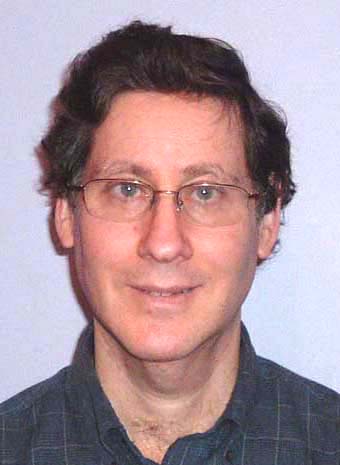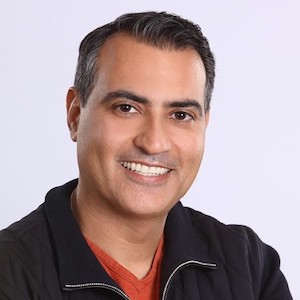News
FrontlineSMS, Human Usability, and the Missing Middle Mile
 FrontlineSMS started in 2005 with what seemed like a simple, clear ambition: make a tool that makes it easy for offline communities to communicate. The goal wasn’t innovation or profit, it was simply to get a useful tool into the hands of as many people as possible...Looking back, it feels naive to think that it could ever be simple—that delivering usable, open source, multi-channel tools that drive measurable, positive outcomes through text messaging could have ever felt inevitable. Nine years and many iterations (and tens of thousands of users) later, though, we’re more successful than ever—and mostly for unexpected reasons...
FrontlineSMS started in 2005 with what seemed like a simple, clear ambition: make a tool that makes it easy for offline communities to communicate. The goal wasn’t innovation or profit, it was simply to get a useful tool into the hands of as many people as possible...Looking back, it feels naive to think that it could ever be simple—that delivering usable, open source, multi-channel tools that drive measurable, positive outcomes through text messaging could have ever felt inevitable. Nine years and many iterations (and tens of thousands of users) later, though, we’re more successful than ever—and mostly for unexpected reasons...
- Login to post comments
- News
What the IoT can learn from the health care industry
 After a short period of excitement and rosy prospects in the movement we’ve come to call the Internet of Things (IoT), designers are coming to realize that it will survive or implode around the twin issues of security and user control: a few electrical failures could scare people away for decades, while a nagging sense that someone is exploiting our data without our consent could sour our enthusiasm. Early indicators already point to a heightened level of scrutiny — Senator Ed Markey’s office, for example, recently put the automobile industry under the microscope for computer and network security. Read More »
After a short period of excitement and rosy prospects in the movement we’ve come to call the Internet of Things (IoT), designers are coming to realize that it will survive or implode around the twin issues of security and user control: a few electrical failures could scare people away for decades, while a nagging sense that someone is exploiting our data without our consent could sour our enthusiasm. Early indicators already point to a heightened level of scrutiny — Senator Ed Markey’s office, for example, recently put the automobile industry under the microscope for computer and network security. Read More »
- Login to post comments
- News
When the United Nations Calls, MicroMappers Acts
 Open source and crowdsourcing—uttering these words at a meeting of the United Nations before the year 2010 would have made you persona non grata. In fact, the fastest way to discredit yourself at any humanitarian meeting just five years ago was to suggest the use of open source software and crowdsourcing in disaster response. Then, a tragic earthquake occured in Haiti in 2010, and OpenStreetMap and Ushahidi were deployed in the aftermath. Their use demonstrated the potential of free and open source crowdsourcing platforms in humanitarian contexts. Then, Typhoon Ruby in the Philippines occured five years later. What technology was used?...
Open source and crowdsourcing—uttering these words at a meeting of the United Nations before the year 2010 would have made you persona non grata. In fact, the fastest way to discredit yourself at any humanitarian meeting just five years ago was to suggest the use of open source software and crowdsourcing in disaster response. Then, a tragic earthquake occured in Haiti in 2010, and OpenStreetMap and Ushahidi were deployed in the aftermath. Their use demonstrated the potential of free and open source crowdsourcing platforms in humanitarian contexts. Then, Typhoon Ruby in the Philippines occured five years later. What technology was used?...
- Login to post comments
- News
Leader in Clinical Research Tech Reacts to Apple's #ResearchKit
 Apple, Inc. has a remarkable ability to capture the world’s attention when announcing “the next big thing.” They have honed their well-known Reality Distortion Field skills for over 30 years...ResearchKit has grabbed such attention. Maybe not as much as The Watch, but amongst the minority of us who pay attention to such things. And the reactions have been typically polarized—it’s either an “ethics quagmire” or “Apple fixing the world.” But reality rarely presents an either-or proposition...
Apple, Inc. has a remarkable ability to capture the world’s attention when announcing “the next big thing.” They have honed their well-known Reality Distortion Field skills for over 30 years...ResearchKit has grabbed such attention. Maybe not as much as The Watch, but amongst the minority of us who pay attention to such things. And the reactions have been typically polarized—it’s either an “ethics quagmire” or “Apple fixing the world.” But reality rarely presents an either-or proposition...
- Login to post comments
- News
Zoeticx Challenges Lack of Interoperability with Open Middleware Technology
 Zoeticx software bridges the gap between medical data and quality patient care. The company offers software solutions for the healthcare industry which are dedicated to Improving Patient Outcomes®, enhancing the quality of care, containing costs, and simplifying administration. These solutions offer an immediate increase in the quality of care by delivering the right information to the right caregiver at the right time, in a manner that can be easily understood. In making an impact on a new healthcare landscape ushered in by Obamacare and the medical industry itself, Zoeticx champions new paradigms through innovation with a patient-centric approach. Its solutions are unique to their ability to address these problems. Read More »
Zoeticx software bridges the gap between medical data and quality patient care. The company offers software solutions for the healthcare industry which are dedicated to Improving Patient Outcomes®, enhancing the quality of care, containing costs, and simplifying administration. These solutions offer an immediate increase in the quality of care by delivering the right information to the right caregiver at the right time, in a manner that can be easily understood. In making an impact on a new healthcare landscape ushered in by Obamacare and the medical industry itself, Zoeticx champions new paradigms through innovation with a patient-centric approach. Its solutions are unique to their ability to address these problems. Read More »
- Login to post comments
- Feature Story
Accelerating Identification and Tracking of Pandemic Disease Outbreaks
 A national biosurveillance program requires the collaboration of multiple federal, state and local agencies to provide a comprehensive view of a health-related event. Bitscopic's Praedico™ biosurveillance platform breaks down the data barriers among organizations with an extensible architecture that can incorporate any kind of data. The platform also delivers high performance by incorporating the latest technologies such as big data, NoSQL databases, and machine learning. Read More »
A national biosurveillance program requires the collaboration of multiple federal, state and local agencies to provide a comprehensive view of a health-related event. Bitscopic's Praedico™ biosurveillance platform breaks down the data barriers among organizations with an extensible architecture that can incorporate any kind of data. The platform also delivers high performance by incorporating the latest technologies such as big data, NoSQL databases, and machine learning. Read More »
- Login to post comments
- News
OpenSpecimen Streamlines Management of Biospecimen Data
 OpenSpecimen is an open source biobanking informatics platform that permits users to enter and retrieve data concerning the collection, storage, quality assurance, and distribution of biospecimens. Its most important feature is the ability to collect high-quality, standards-based data specific to a disease or set of study requirements. OpenSpecimen, previously known as caTissue, was initially developed with U.S. National Cancer Institute funding under the caBIG program. When the caBIG program closed down in 2011, Krishagni Solutions continued the development and support of caTissue while maintaining the open source nature of the product. In 2014, Krishagni renamed the product to OpenSpecimen to indicate that the product can support any disease (i.e. not just cancer) and any specimen type (i.e. not just tissue)...
OpenSpecimen is an open source biobanking informatics platform that permits users to enter and retrieve data concerning the collection, storage, quality assurance, and distribution of biospecimens. Its most important feature is the ability to collect high-quality, standards-based data specific to a disease or set of study requirements. OpenSpecimen, previously known as caTissue, was initially developed with U.S. National Cancer Institute funding under the caBIG program. When the caBIG program closed down in 2011, Krishagni Solutions continued the development and support of caTissue while maintaining the open source nature of the product. In 2014, Krishagni renamed the product to OpenSpecimen to indicate that the product can support any disease (i.e. not just cancer) and any specimen type (i.e. not just tissue)...
- Login to post comments
- News
A Case for Governments Developing Open Source Software
 Being a hardcore developer who cares deeply about software, and having worked for local government for the past eight years, I have pondered this question often. On the one hand, a running philosophical theme is that programming is the new literacy, and because software permeates every aspect of our lives, programming amounts to expressing knowledge, just like writing does...software has become the best, most accurate (and sometimes only) expression of business knowledge that an organization possesses.The key point here entails a radical shift in attitude toward in-house development: rather than doing it as a last recourse, in-house development should be the first option to consider...
Being a hardcore developer who cares deeply about software, and having worked for local government for the past eight years, I have pondered this question often. On the one hand, a running philosophical theme is that programming is the new literacy, and because software permeates every aspect of our lives, programming amounts to expressing knowledge, just like writing does...software has become the best, most accurate (and sometimes only) expression of business knowledge that an organization possesses.The key point here entails a radical shift in attitude toward in-house development: rather than doing it as a last recourse, in-house development should be the first option to consider...
- Login to post comments
- News
Jean Piaget & the Usability of Healthcare Software
 The usability of healthcare software, or lack thereof, has been a topic of discussion for several years. The problem has become so widespread that the American Medical Association (AMA) has recently issued a framework for improving the ease of use of EHRs that, in part, includes the reduction of 'cognitive load.' Piaget’s theories can be applied to understanding some of the reasons why many EHRs are just too hard to use. They can provide guidance for finding ways to reduce the cognitive workload that so often hinders the user experience of EHR systems. Read More »
The usability of healthcare software, or lack thereof, has been a topic of discussion for several years. The problem has become so widespread that the American Medical Association (AMA) has recently issued a framework for improving the ease of use of EHRs that, in part, includes the reduction of 'cognitive load.' Piaget’s theories can be applied to understanding some of the reasons why many EHRs are just too hard to use. They can provide guidance for finding ways to reduce the cognitive workload that so often hinders the user experience of EHR systems. Read More »
- Login to post comments
- News
Benefits, Challenges and Best Practices of Clinical Trials: Paper vs. Electronic Data Capture
 On February 25th 2015, Clinovo hosted the 10th Session of the Silicon Valley BioTalks at HP’s headquarters in Palo Alto. The attendees consisted of life science industry professionals with the sole intent of discussing the benefits, challenges and best practices of paper-based clinical studies vs EDC based studies. To add a valuable experience to the conversation, the event featured a panel of 4 clinical trials professionals... Read More »
On February 25th 2015, Clinovo hosted the 10th Session of the Silicon Valley BioTalks at HP’s headquarters in Palo Alto. The attendees consisted of life science industry professionals with the sole intent of discussing the benefits, challenges and best practices of paper-based clinical studies vs EDC based studies. To add a valuable experience to the conversation, the event featured a panel of 4 clinical trials professionals... Read More »
- Login to post comments
- News